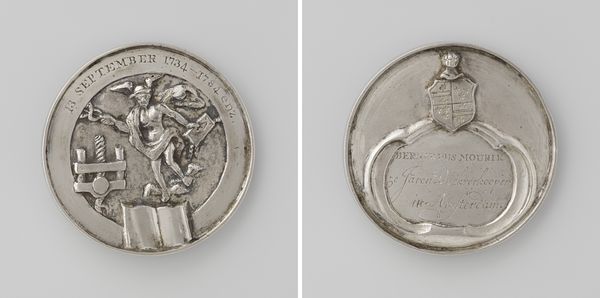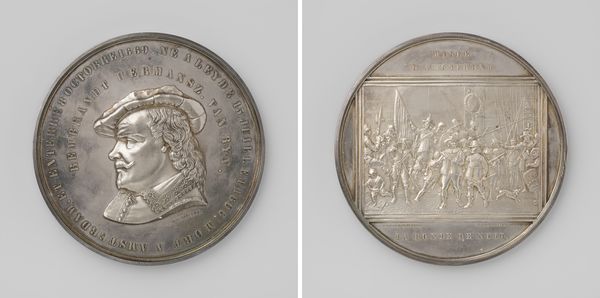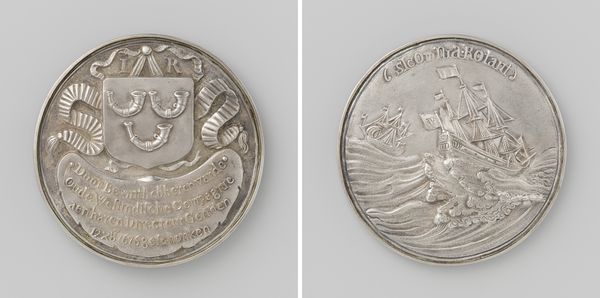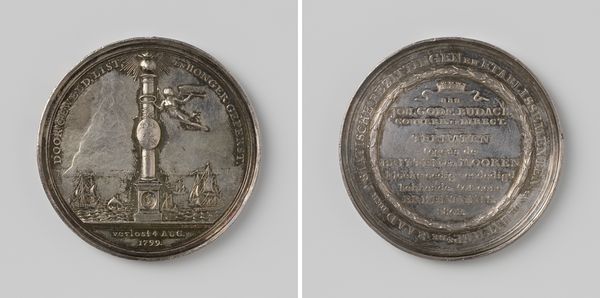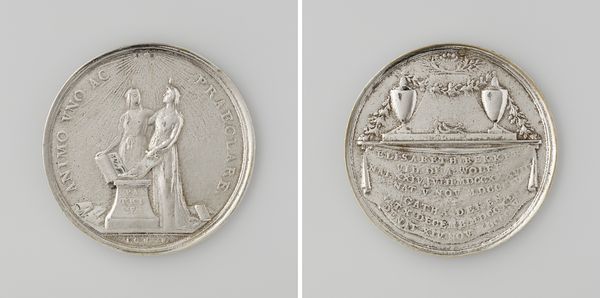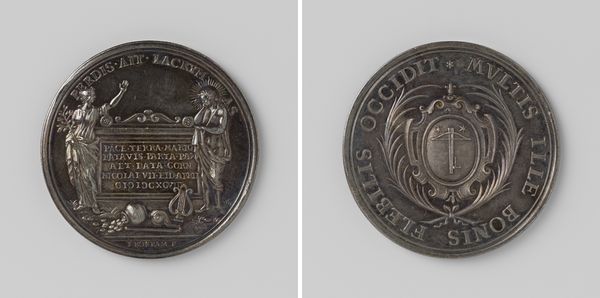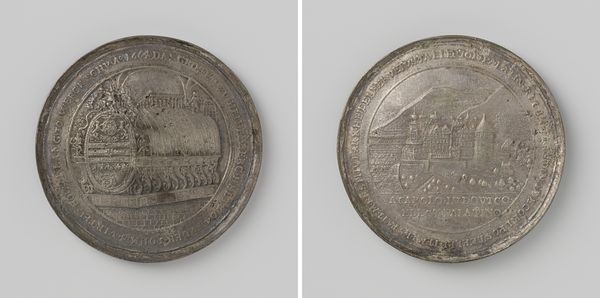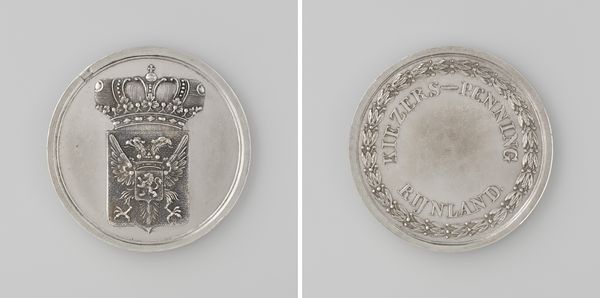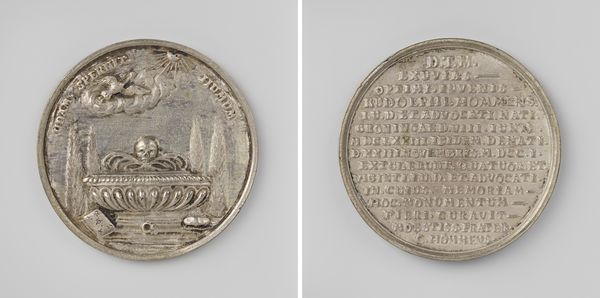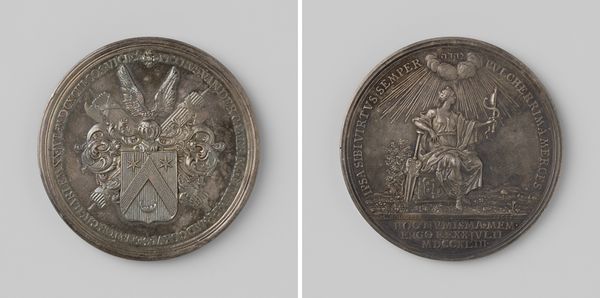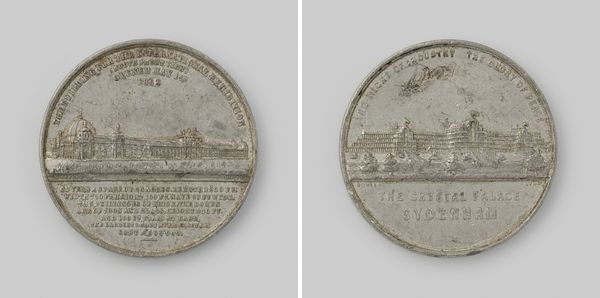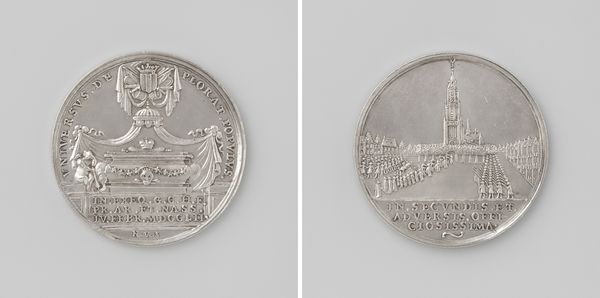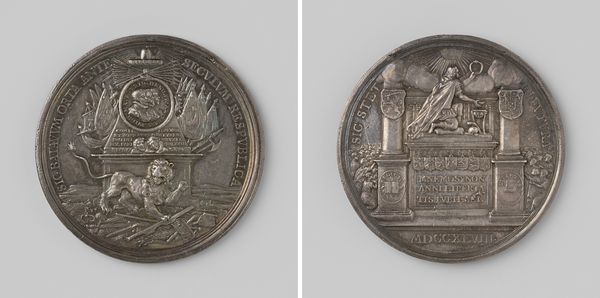
print, metal, relief, engraving
#
portrait
#
neoclacissism
# print
#
metal
#
relief
#
history-painting
#
engraving
Dimensions: diameter 4.5 cm, weight 32.83 gr
Copyright: Rijks Museum: Open Domain
Editor: Here we have "Bernardus Mourik, vijftig jaar boekverkoper te Amsterdam", created around 1784. It's an engraving, or perhaps some other kind of printmaking on metal, I believe? It looks like a commemorative coin or medallion. The imagery is so striking! What's your take on it? Curator: Given the material, likely silver or a similar alloy, its creation speaks volumes about the guild system of the late 18th century. The dedication inscribed reveals its primary function: a tangible form of social capital awarded within a community of tradesmen. Note the contrast between the allegorical figure representing commerce and the detailed printing press depicted—how does this elevation of labor to a nearly mythological level reflect the era's burgeoning print culture and Amsterdam's powerful merchant class? Editor: That's fascinating! I hadn't thought about the choice of metal itself being so relevant to the context. It's more than just an image; it's an object embedded in a system. So, what does the materiality, in this case, tell us about the division of labor in its making, between the engraver or die cutter and the people involved with distributing these items in Amsterdam’s commercial scene at that time? Curator: Precisely! The medal represents skilled labour – someone would have created the dies and used heavy equipment to punch or mint the coins. So it elevates not only the book seller and commerce itself. The very act of production of these medals speaks to Amsterdam's ability to control skilled manufacturing processes and manage symbolic representation. This coin’s worth is not simply in the silver but rather its material association with value of commercial activity. Editor: So we can infer a great deal from the physical object itself about how commerce, labor, and even identity were intertwined at that time. It is cool to examine a singular artwork like this as a kind of document on how it represents the values of labor in early Amsterdam. Curator: Yes, indeed. The medal's materiality offers us tangible insights into the production of social and economic meaning during the Dutch Golden Age’s aftermath, connecting the art with real-world process.
Comments
No comments
Be the first to comment and join the conversation on the ultimate creative platform.
